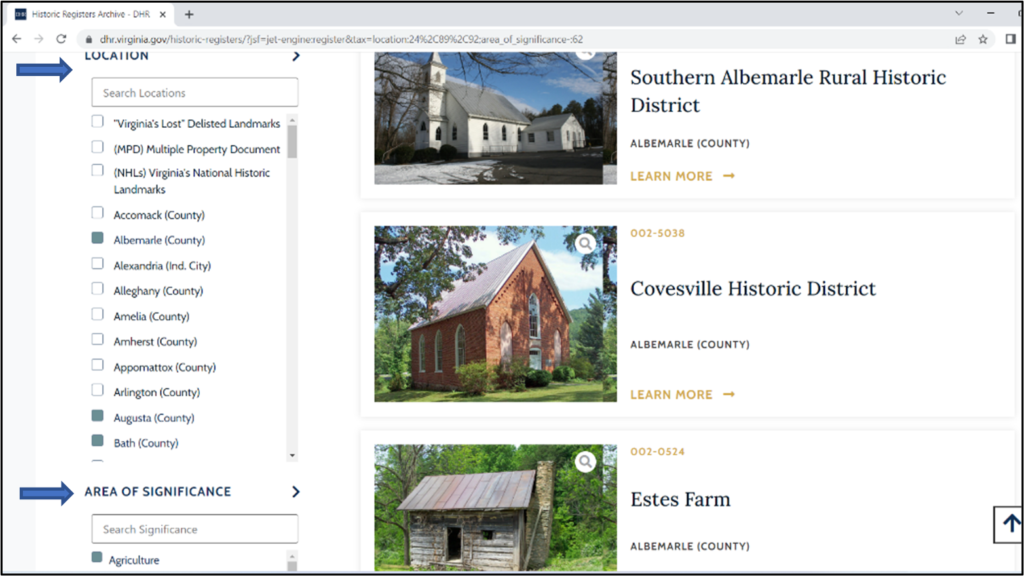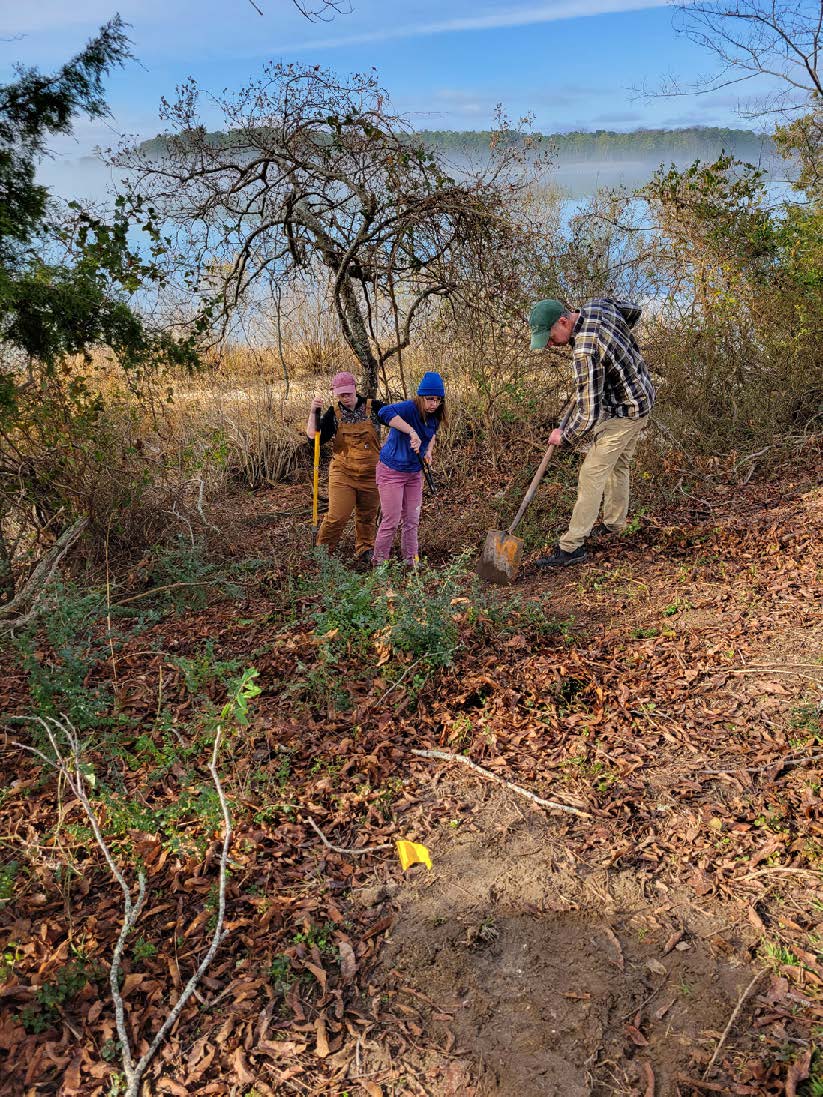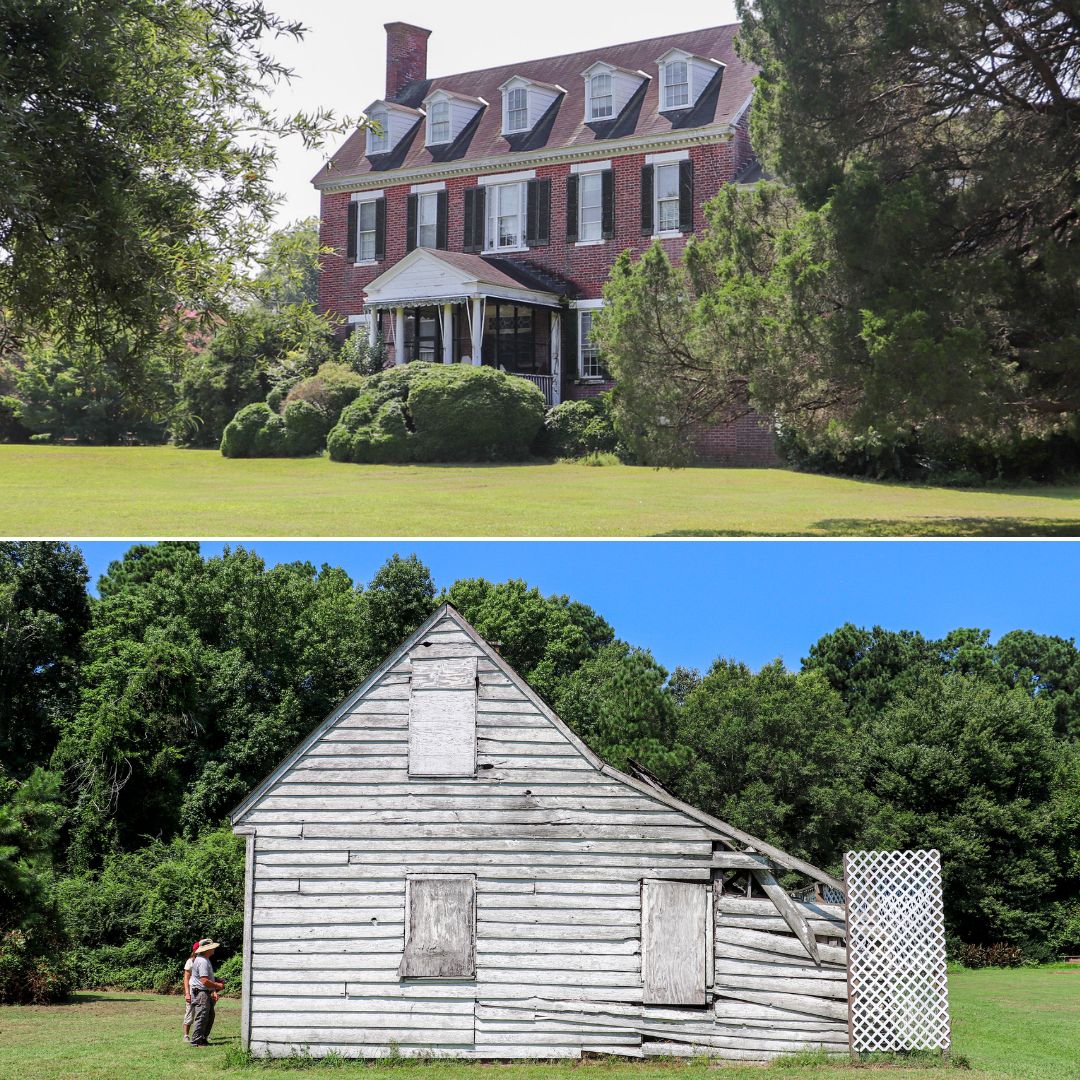Virginia Landmarks Register (VLR) Online – An Introduction
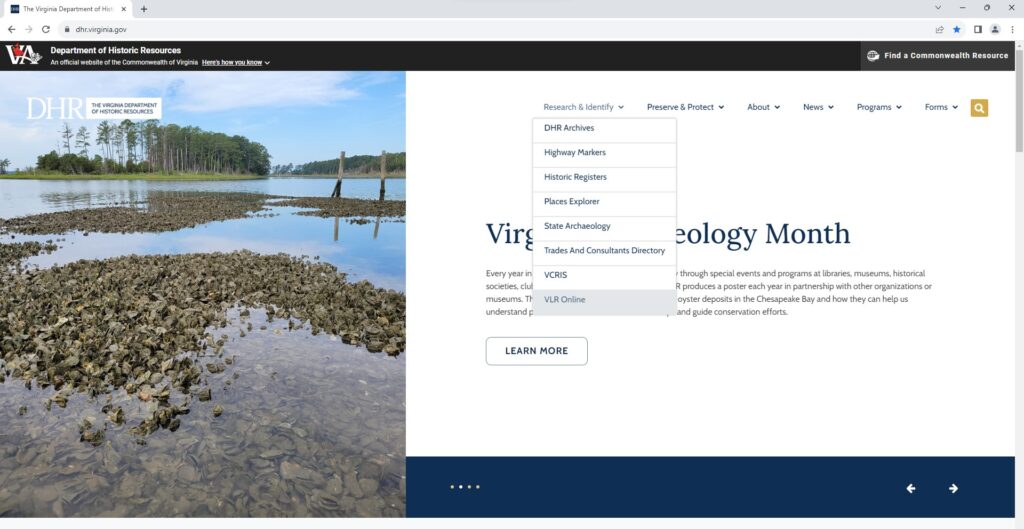
The author walks us through how to use the newly designed VLR Online to find information on historic properties listed on the Virginia Landmarks Register.
By Lena McDonald, Register Historian
Regular visitors to DHR’s website may already be familiar with DHR’s digitized collection of national and state register nominations. Dubbed “VLR Online,” the title is in reference to the previous hard-copy publication entitled Virginia Landmarks Register, edited by Calder Loth, the fourth and last edition of which was published in 1999. Today, Virginia’s 3,500 register-listed properties are too numerous to include in a single book. As a research guide and documentation of important historic places across the Commonwealth, the book was invaluable and DHR staff determined to replace it with an interactive online collection. Virginia was one of the first states to undertake such an effort. As a national leader in numbers of new listings each year, we continue our efforts to widen and deepen understanding of our Commonwealth’s multi-faceted history, from the origins of indigenous peoples who have occupied this land for thousands of years to European colonization and settlement starting in 1607 at Jamestown.
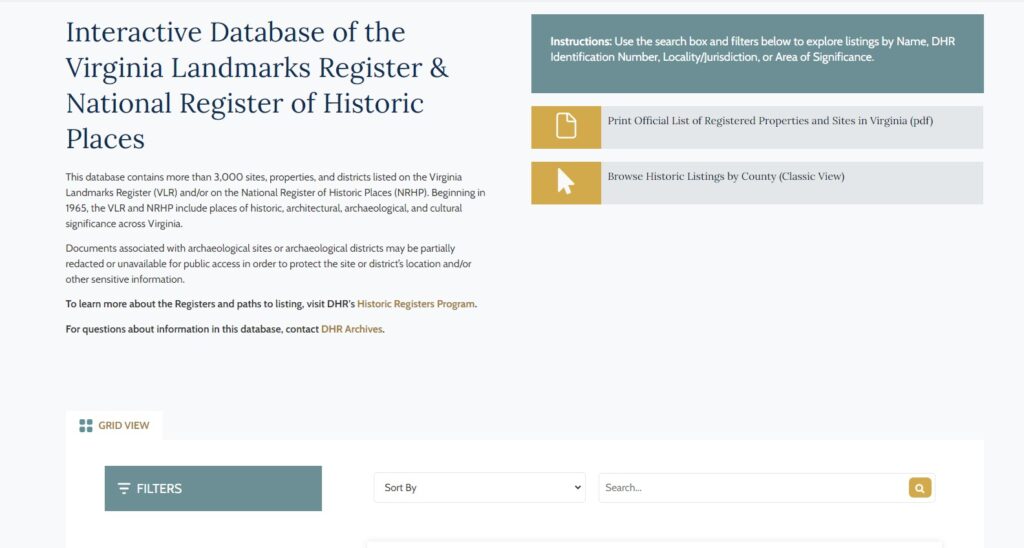
Over the past five years, DHR staff have undertaken an enormous initiative to obtain current, color photographs of properties listed in the Virginia Landmarks Register and National Register of Historic Places, whether their listing was five years ago or 55 years ago. Through leadership by DHR’s Archivist, Quatro Hubbard, and Senior Architectural Historian (Emeritus) Calder Loth, the quality of past and current photos have been improved, photo credits and dates have been identified to the extent possible, and multiple images are now being included as they become available. Consequently, a visitor to VLR Online can see how a property appeared around the time of its register listing and at intervals since then. An example is Haw Branch in Amelia County, which was listed in 1972-1973 and has been carefully maintained since then. Five images of the primary dwelling, including a historic postcard, two black-and-white images, and two color images, are included on the property’s VLR Online page.
Furthering its usefulness, VLR Online now can be searched using multiple filters that include geographic locations and areas of significance, DHR inventory number, and property names. Multiple options can be selected simultaneously to yield results. For example, a user may want to know how many properties in Augusta, Bath, and Albemarle counties are listed for their significance in the areas of Exploration/Settlement and Agriculture. A user can select the localities first by clicking the box next to each name, then can refine the search results by clicking on Agriculture and Exploration/Settlement in the list of Areas of Significance. Nineteen properties suit these search criteria, including seven historic districts, an octagonal barn, a farm and former tavern, and several former plantations. Visitors can click on each property’s name to view the VLR Online page, which includes the property’s listing dates, a brief summary of the property’s significance, and a link to the property’s nomination form. Visitors will notice quickly that older nominations generally have far less information than more recent nominations. The older nominations may be outdated in terms of their descriptions and historic contexts, but they have value in identifying events, trends, and people who were most often featured and how those factors have changed over time. DHR staff regularly use information such as this when we are developing program priorities, allocating resources toward new nominations, assisting outside groups with preparing grant applications, evaluating potential effects of new infrastructure projects on historic resources, helping partner organizations with developing educational materials, and many other purposes.
DHR staff will continue to enrich VLR Online, and we thank everyone who has participated in improving VLR Online to date.
